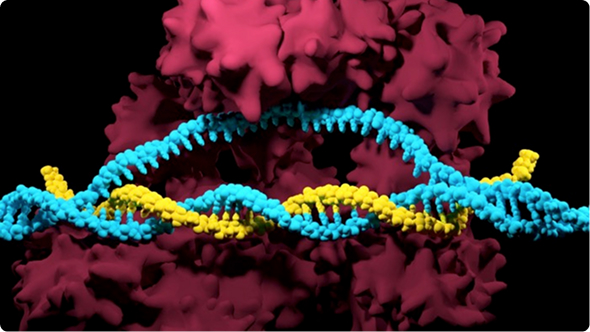
Congratulations! You have introduced all the necessary CRISPR-Cas9 components into your cells! Now, you want to know if it worked. Validating your CRISPR editing is an extremely important step in your experiment, and there are many options available to assess CRISPR editing efficiency. How do you know which one is the right one for you? We have summarized the major CRISPR analysis tools and methods scientists use to evaluate the results of their CRISPR experiments.
Overview of CRISPR Analysis Methods
The methods available to analyze CRISPR editing efficiency vary depending on the type of mutation you wish to introduce into your cells. Editing involving homology-directed repair (HDR), which knocks in new DNA sequences, can be assessed by a number of methods such as restriction enzyme digest (if your mutation results in a loss or gain of a restriction enzyme site) or size changes in your PCR product (if your repair template is large enough to detect a size change). Traditional Sanger sequencing or next-generation sequencing (NGS) can be used to assess single nucleotide changes.
If your CRISPR experiment relies on the non-homologous end joining (NHEJ) repair pathway, the resulting repair mechanism generates errors by either inserting or deleting nucleotides (termed indels) at the CRISPR-Cas9 cut site. Indel frequency and type are random, resulting in a heterogeneous population of cells harboring various indels. There are a number of sequencing- and non-sequencing-based approaches to assess the efficiency of and/or differences in specific indel formation in your population described below.
Whether your experiment is using HDR or NHEJ, many CRISPR analysis methods rely on PCR amplification of the edited region as a first step. Depending on the method, subsequent Sanger sequencing of both control (non-edited) and experimental (edited) samples are used to analyze the degree or extent of CRISPR editing (editing efficiency) and spectrum of editing events (clonality). Non-sequencing based approaches rely on manipulation of the resulting PCR product to determine changes.
Oldie But Goodie: CRISPR Analysis Using Next-Generation Sequencing
The gold standard of analyzing CRISPR editing involves targeted next-generation sequencing to perform deep sequencing on the region of interest. Targeted NGS is an extremely sensitive method of detecting editing outcomes, and the high-throughput sequence-based data provides a comprehensive view of the indels generated. This level of detailed data analysis does not come cheap. NGS is an extremely time- and labor-intensive process that includes many steps from DNA extraction to sequencing and analysis, which are not amenable to smaller labs or small-scale CRISPR studies. Therefore, NGS is most effective when the number of samples is high, you have access to a bioinformatics team, and your budget allows for it.
It is not practical for many researchers to use NGS to analyze all of their CRISPR editing experiments. If you are not able to embark on committing to NGS to validate your CRISPR experiments, don’t worry, you are not alone. Alternative cost-friendly analysis tools are available and described below.
That New New: Inference of CRISPR Edits (ICE) from Synthego
Synthego has developed a new user-friendly online tool called Inference of CRISPR Edits (ICE) to analyze CRISPR data. ICE uses Sanger sequencing data to determine the relative abundance and levels of indels due to CRISPR editing.
ICE software aligns the unedited sample to the original sgRNA sequence, followed by alignment of unedited and edited samples to determine the differences between samples. The ICE tool will then calculate editing efficiency (producing an ICE score, which corresponds to indel frequency) and provide detailed information on the different types and distributions of indels generated in your sample. Moreover, the ICE software can detect unexpected editing outcomes such as large insertions or deletions without any additional time or cost.
The ICE tool is highly accurate. When compared to NGS, ICE analysis results were highly comparable (R² = 0.96), providing users the ability to achieve NGS level results without breaking the bank.
Some key features of the ICE software include:
- User-friendly interface to upload your data files and to interpret your results
- Identification of all indels in your sample, and the relative contributions of each
- Knockout Score that specifically focuses on the proportion of edits that contain large indels or edits that cause a frameshift
- Compatibility with batch sample uploads and multi-guide sgRNA editing analyses
15 Minutes Are Up: Tracking of Indels by Decomposition (TIDE)
TIDE is an older method to analyze CRISPR editing results using Sanger sequencing data. TIDE initially represented an attractive alternative to NGS due to the lower cost of Sanger sequencing, but it has several limitations that were never overcome.
Similar to ICE, TIDE software aligns your sgRNA sequence to your unedited and edited samples. Following alignment, TIDE software decomposes the sequencing data using the unedited sequence as a template to compare to, resulting in an estimation of the relative abundance and level (or number) of insertions or deletions in your sample compared to your unedited controls. The software also provides a goodness of fit R² value and assesses the statistical significance of each insertion or deletion identified.
For insertions of a single base pair (also referred to as +1 insertion), TIDE software can infer or predict what nucleotide is inserted. This capability is primarily used for +1 insertions, rather than other indel types, since predictions of longer insertions are more complex and require manually changing the settings of the TIDE software to achieve best results. Although the TIDE analysis web tool allows the user to modulate specific settings for their analysis such as alignment and decomposition window, these parameters might be difficult to modify with confidence for the average user.
Quick and Dirty: T7 Endonuclease 1 (T7E1) Assay
In the T7E1 assay, your region of interest is PCR amplified, however, unlike the other methods, the T7E1 assay does not use DNA sequencing to determine CRISPR editing efficiency. The T7E1 assay takes advantage of the T7 endonuclease, which preferentially cleaves mismatched DNA.
Following PCR amplification, the PCR product is denatured and re-annealed through a series of heating and cooling steps. The re-complexed product will result in heteroduplexed DNA. T7E1 recognizes and cleaves DNA duplexes that contain mismatches, so edited regions will be cleaved and generate smaller-sized DNA fragments that are visualized by agarose gel electrophoresis.
This method can be used to identify the presence of CRISPR-generated mutations, but it is not quantitative and does not provide information on the different indel sequences generated. The T7E1 assay is sometimes used as a first test while optimizing CRISPR conditions when precise analyses are not necessary because it is the cheapest and fastest method to perform.
Which CRISPR Analysis Method is Right for You?
Now that you have familiarized yourself with the various ways to analyze your CRISPR data, how do you know which one to choose? The method you choose depends on your available time and budget as well as the level of detail you wish to obtain in the analysis.
Even though NGS is the gold standard because of its high accuracy and sensitivity, it is only useful when you have a large number of samples and funds, and access to bioinformatics to support the analysis. If NGS is not in your budget, ICE and TIDE software tools offer cost-effective alternatives that provide sequence level data and statistical significance for indels identified. Between the two, ICE has greater capabilities compared to TIDE since it can detect more editing outcomes, including large insertions or deletions. Additionally, ICE has been demonstrated to be comparable to NGS, meaning you get the cost-effectiveness of Sanger sequencing without sacrificing accuracy.
If you do not need to look at detailed nucleotide level changes, and just need to know if there was editing or not, the cheapest option is a non-sequencing based method such as the T7E1 assay. While it lacks the sequencing level data, it does still provide you with general editing information by agarose gel electrophoresis. Post-hoc analysis of your bands can be used to calculate the estimated gene editing efficiency.
Whichever method you choose, it is extremely important to validate the results of your CRISPR experiment before moving onto the next steps in your project. Hopefully this article has given you a better idea of the methods and tools available to start the validation process.
If you have any questions about this article or CRISPR editing in general, please feel free to contact us our Technical Support Team.

